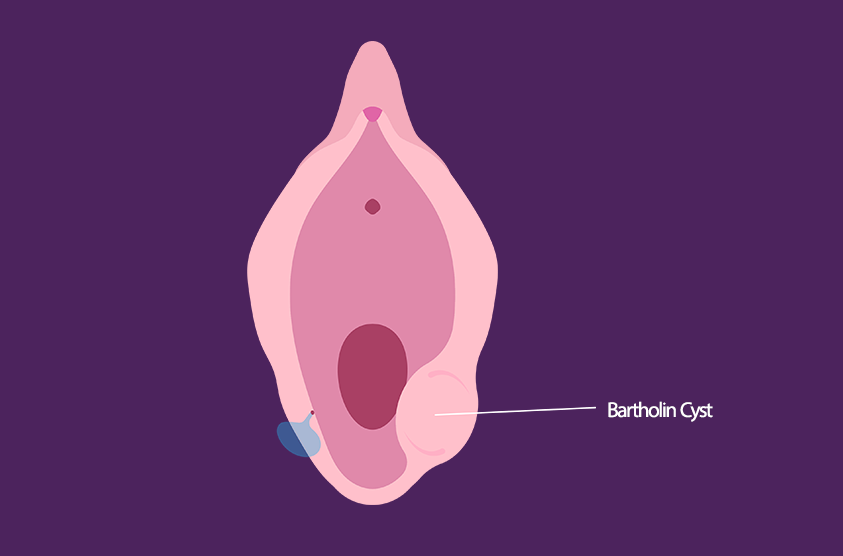- Fikriye Gedikoglu
- 0 Comments
Bartholin cyst, which is one of the most common conditions encountered in gynecological examinations of women, can often progress unnoticed. However, when infected, it can cause serious discomfort. So what exactly is a Bartholin cyst? Why does it occur and how is it treated?
What is a Bartholin Cyst?
The Bartholin glands are two small glands at the entrance to the vagina that secrete a lubricating fluid. When there is a blockage in the duct of these glands, the fluid cannot escape and accumulates inside. In this case, a cyst forms inside the gland. This is called a Bartholin’s cyst.
Why Does a Bartholin Cyst Occur?
The main cause of cyst formation is blockage of the duct. The underlying causes of this blockage may be
- Sexually transmitted infections (chlamydia, gonorrhea, etc.)
- Vaginal trauma
- Lack of hygiene
- Previous Bartholin abscess
If the fluid accumulated as a result of the obstruction becomes infected with bacteria, the cyst can turn into an abscess, which can manifest itself with symptoms such as pain, swelling and fever.
What are the Symptoms of Bartholin Cyst?
If the Bartholin’s cyst is small, it usually causes no symptoms. However, if the cyst grows or becomes infected, the following symptoms may occur:
- Painful swelling at the entrance to the vagina
- Discomfort when walking or sitting
- Pain during sexual intercourse
- Fever and general malaise in abscess
How is a Bartholin Cyst Treated?
Treatment depends on the size of the cyst, the patient’s complaints and the presence of infection:
- Follow-up: Small and painless cysts usually do not require treatment. They are followed up with regular gynecological examinations.
- Warm sitz baths: May help the cyst to drain spontaneously.
- Drainage procedure: In infected and painful cysts, the cyst is drained under local anesthesia.
- Marsupialization: The cyst wall is surgically opened to prevent the cyst from forming again.
- Gland removal (excision): In recurrent cases, the Bartholin gland may need to be completely removed.
Which of these methods will be applied is decided together with the obstetrician.

